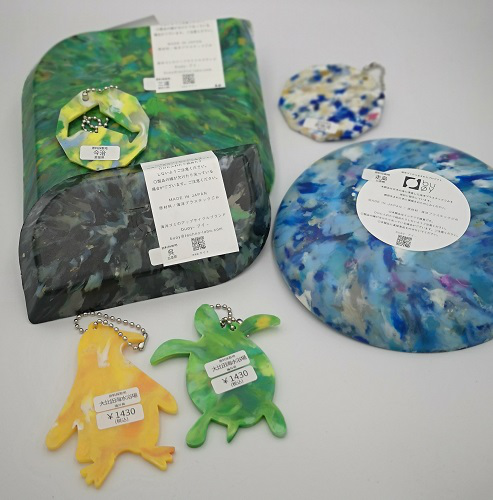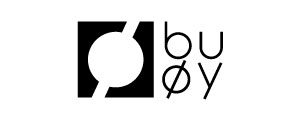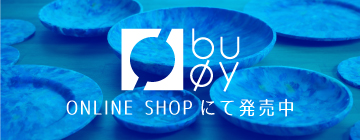Product Concept
buøy’s product concept is to create non-discardable products from discarded plastic. As a concrete means of achieving this, we have attempted to take plastic washed ashore as marine debris and transform it into beautiful artifacts.
The basis of the technology comes from a project called Plas+tec, which started within a product design company (Technolab) in Yokohama. What new ways could there be to create more beautiful plastic materials? Through a series of activities, we developed a technology to manufacture plastic not as a mass-produced material but as a one-of-a-kind craft.
The technology to create a new aesthetic by mixing different plastics was very suitable for recycling marine plastic waste. With this -not sort- technology, a mixture of many plastics produces unique marble colors & patterns. Thus was born the template for the “buøy” product.
The member of the Plas+tec project works with plastic materials daily.
To have plastic materials be the target of social criticism is akin to our children.
It was a natural progression for us to reclaim marine plastic waste, the subject of heavy criticism, to transform a product called “buøy.
Why did we set out to create an artifact, not a product?
During our discussions about marine plastic waste, we conclude that plastic is not perishable.
Intelligentsia considered plastic material impacts the environment enormously because it does not decompose. The wood and paper are decomposing, unlike plastic. However, if we manufacture and dispose of them in large quantities, who can say they do not have a negative effect? In the 1970s, intelligentsia called plastic an eco-friendly material because it reduced the use of wood. At the time, wood consumption was considered environmental destruction.
In the end, in our excessive pursuit of convenience, is it not the case that manufacturers of plastic products have too much obedience to this pursuit?
The root of the problem lies not in plastic material but in our habit of mass production and consumption. Therefore, we have discussed what we can do to “stop throwing away” plastic products.
We easily discard plastic products because they are “cheap” and “replaceable.” Without an emotional connection with the product, we can easily find compatibles.
But if the product is beautiful, one-of-a-kind, and not inexpensive, if it was their only product in the world, who throws them away?
Our technology developed in the Plas+tec project can create plastic products as beautiful and one-of-a-kind artifacts.
This technology could be the solution for our easy-thrown-away habit with plastic.
And so “buøy” was born as an artifact, not a mass-produced product.
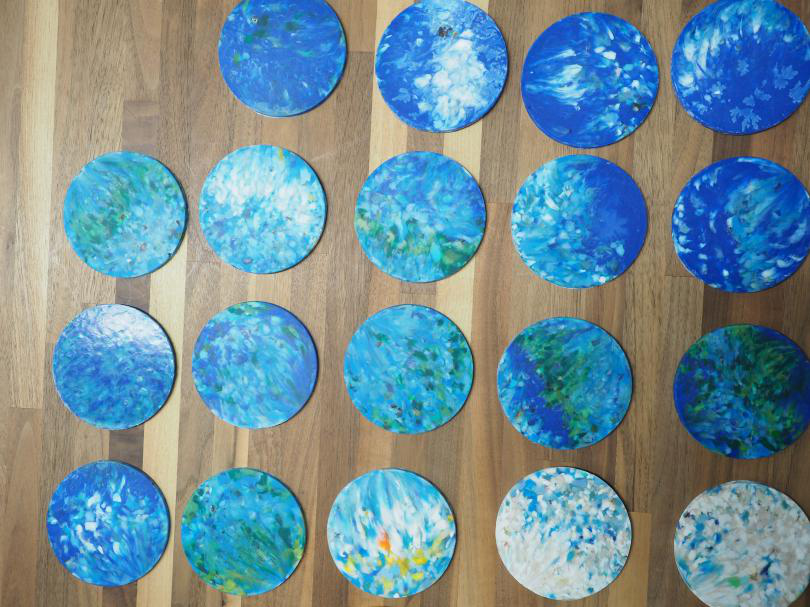
What was difficult in producing buøy products?
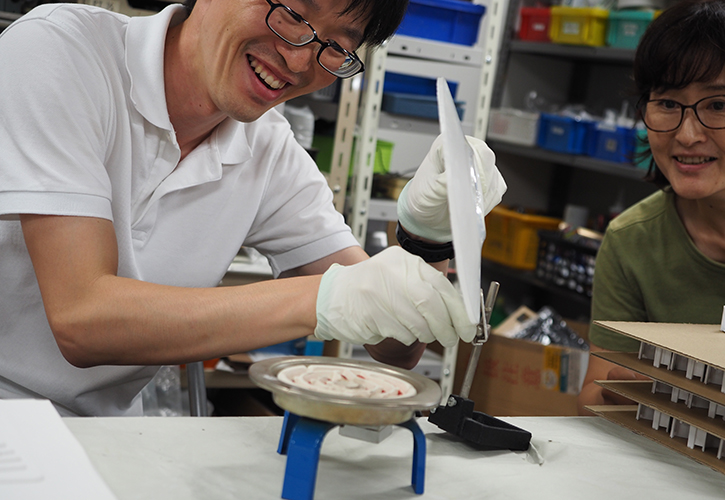
In the Plas+tec project phase, before “buøy” was born, we had a hard time finding whether the product from plastic could be recognized as artifacts.
People today consider plastic materials for mass production purposes, so it is not common practice to manufacture one product at a time, like craft work. Although 3D printers produce one product at a time, we cannot say those 3D-printing products to havethe aesthetics feature.
We also are reluctant to call them artifacts because they are under repetitive production, the same item from the same data.
We then turned our attention to the plastic material itself.
Plastic melts when heated and hardens when cooled. It has the same characteristics as candy and wax. In Japan, we make the tortoiseshell-candy as a traditional craft work.
We find plastic products also have the same character as that candy.
Using our many years of expertise in plastic manufacturing, we considered various methods of molding plastic raw materials from multiple angles. Finally, we arrived at our current manufacturing method.
By shaping under certain conditions while applying heat and pressure, plastic materials are half-melt but not wholly melted to create a beautiful mosaic-like molded surface.
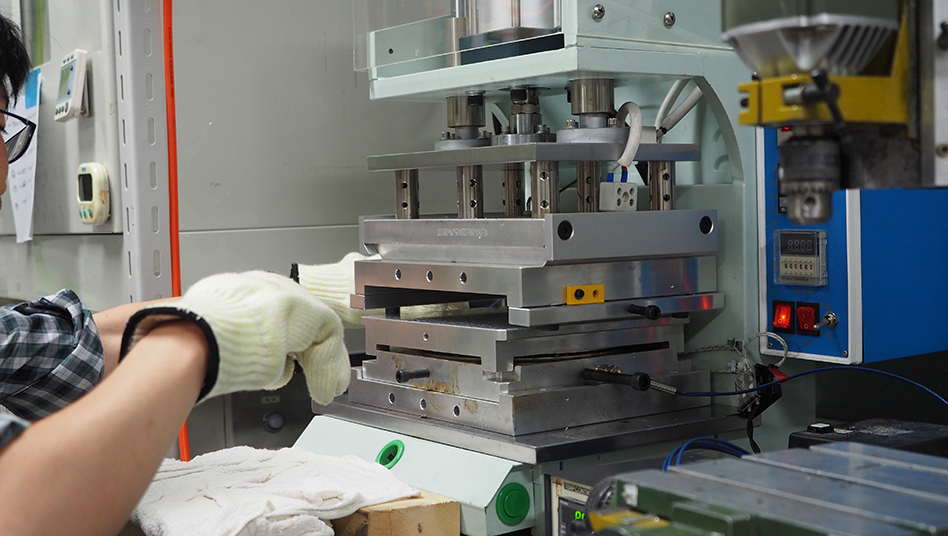
This process allows us to create a variety of textures and color combinations that we have never seen before, and each piece is unique.
This manufacturing method must be suitable for the world we aim for, as it allows us to create colors and textures in a craft-like manner that glass and wood can never produce.
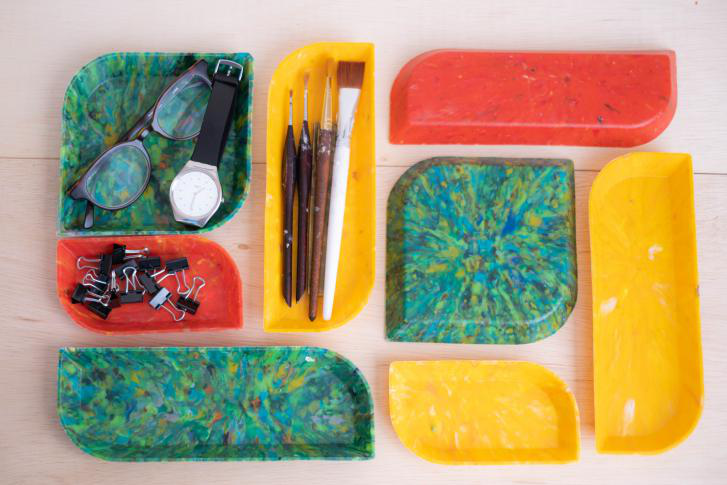
However, using marine debris to make “buøy” was very difficult. Marine debris consists of many kinds of plastics, and it would be unrealistic to separate each type since there are no labels on the trash to label the raw materials.
We had to simultaneously mold different types of plastics whose raw materials we did not know, and this required a great deal of know-how and expertise to stabilize the manufacturing conditions.
Even more problematic was the collection of plastic waste as raw material. In the beginning, we collected plastic trash from the seaside in Shonan. However, collecting enough trash to make a significant product took a lot of work.
Working with Volunteer Organizations
The turning point for us was the crowdfunding campaign. We launched a crowdfunding campaign (called “rebirth” at the time) to see how the “buøy” product would fare in the market. Then many volunteer trash pick-up groups from all over the country supported our crowdfunding effort. They asked us to use the marine debris they had collected.
They said they felt sad when they threw away their pick-ups for nothing.
Yes, we should collect that discarded plastic and make it functional again.
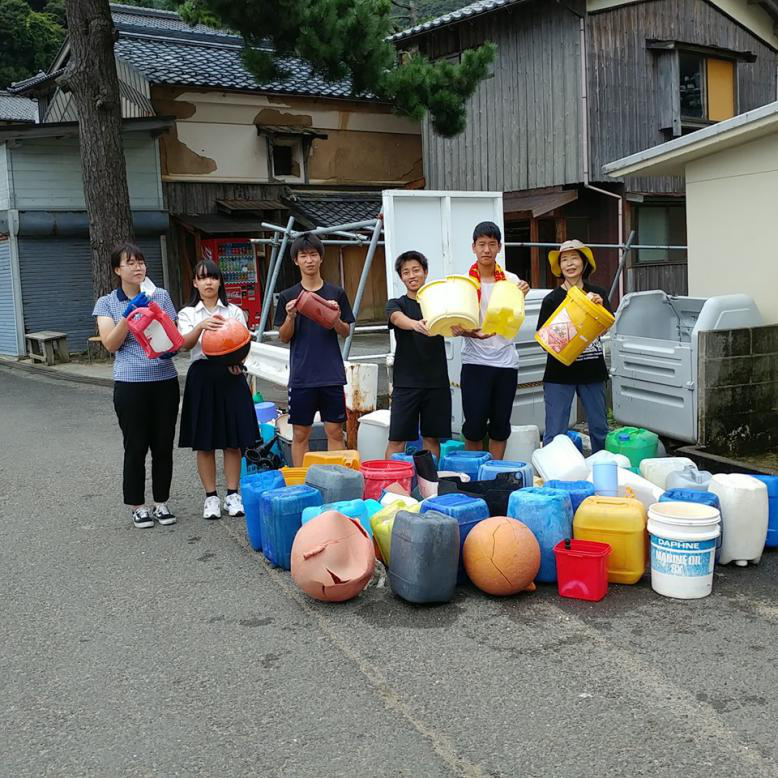
It would be an exciting project if “buøy” could collaborate with an organization that is having trouble with marine debris drifting ashore and wants to produce attractive handicrafts using such marine debris as material.
We label all buøy products with the place of collection and who collects them. Also, we listed the information about those organizations on the website.
